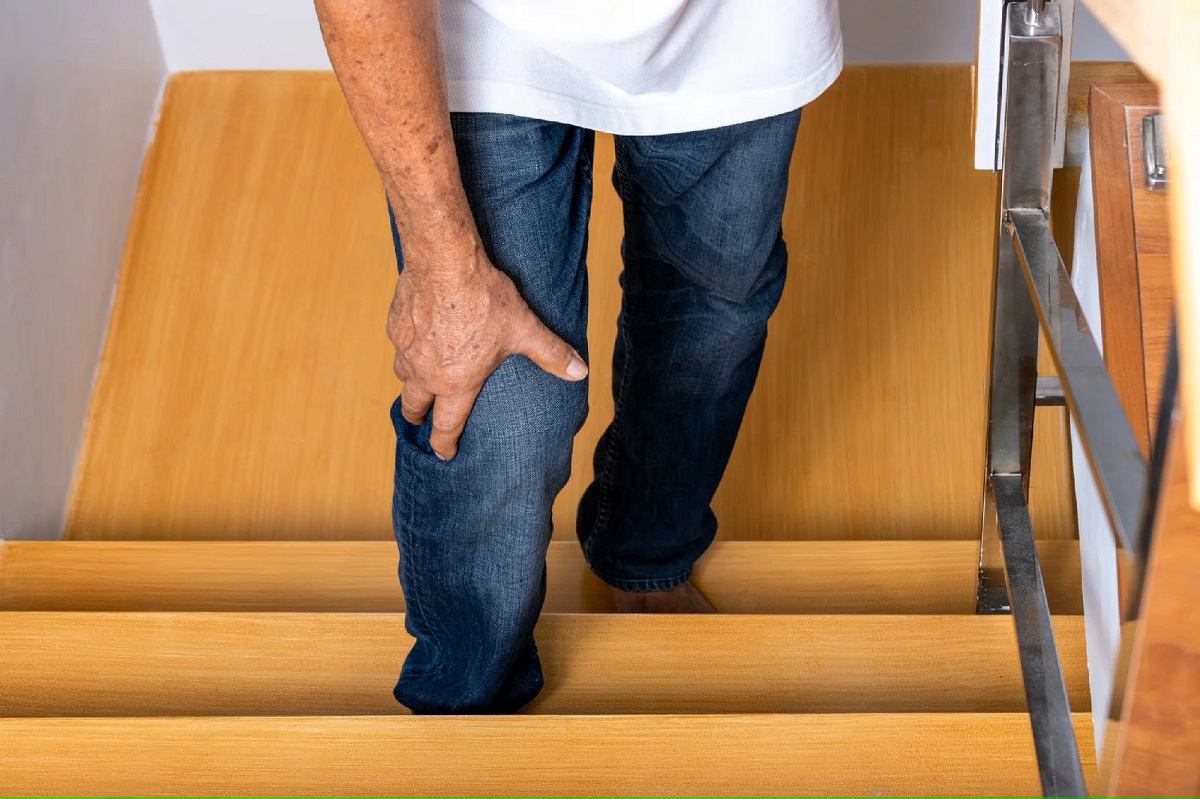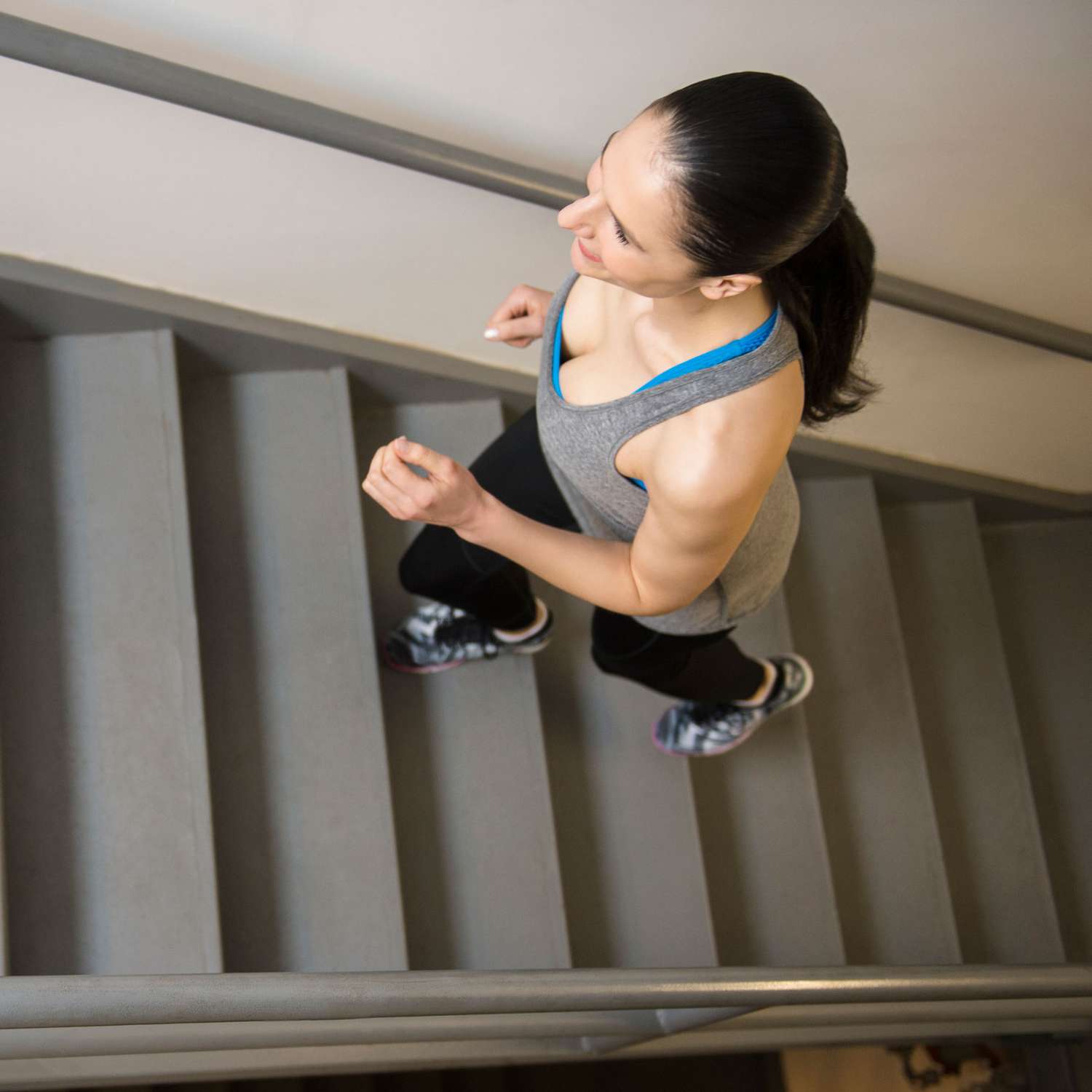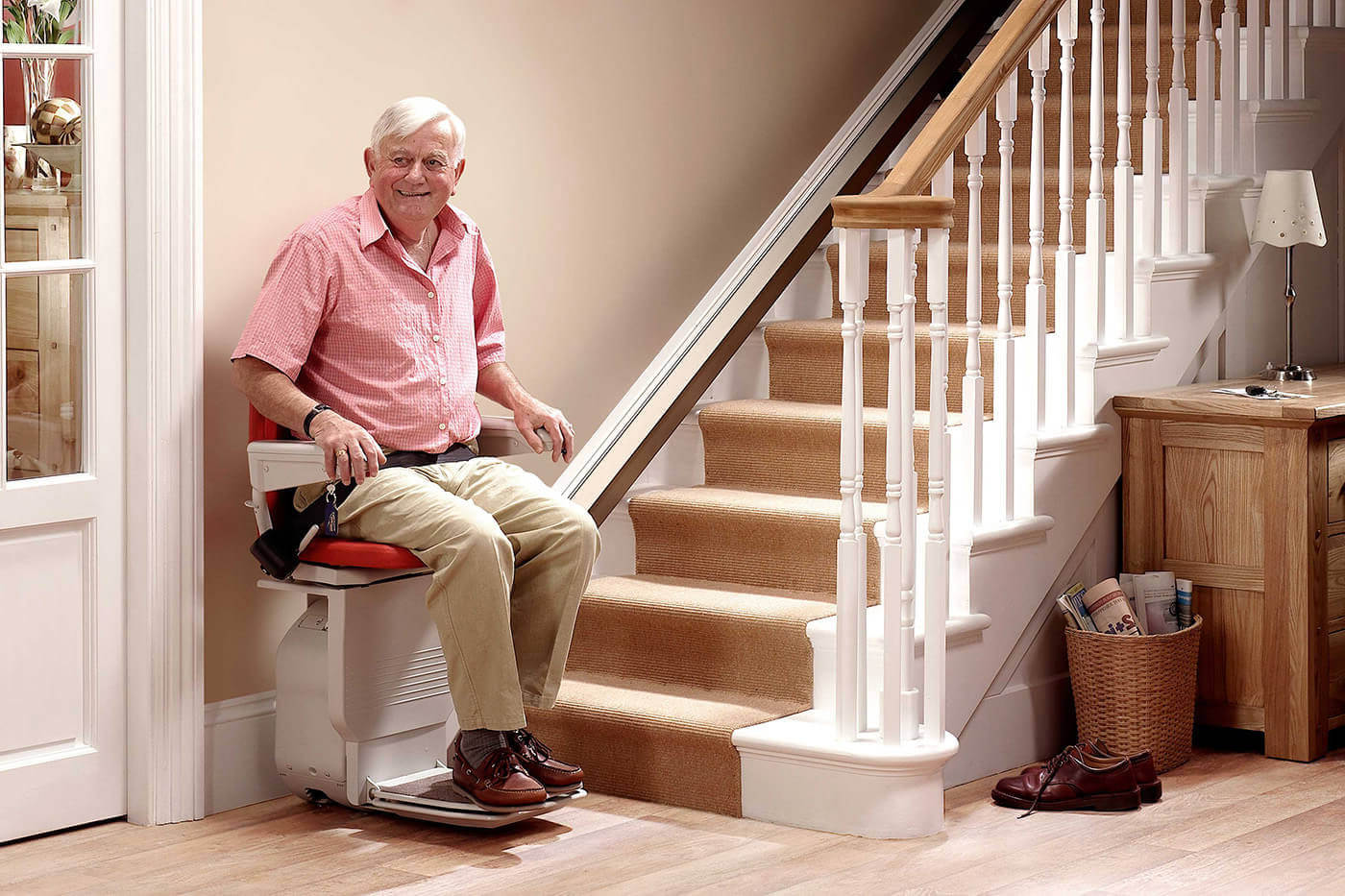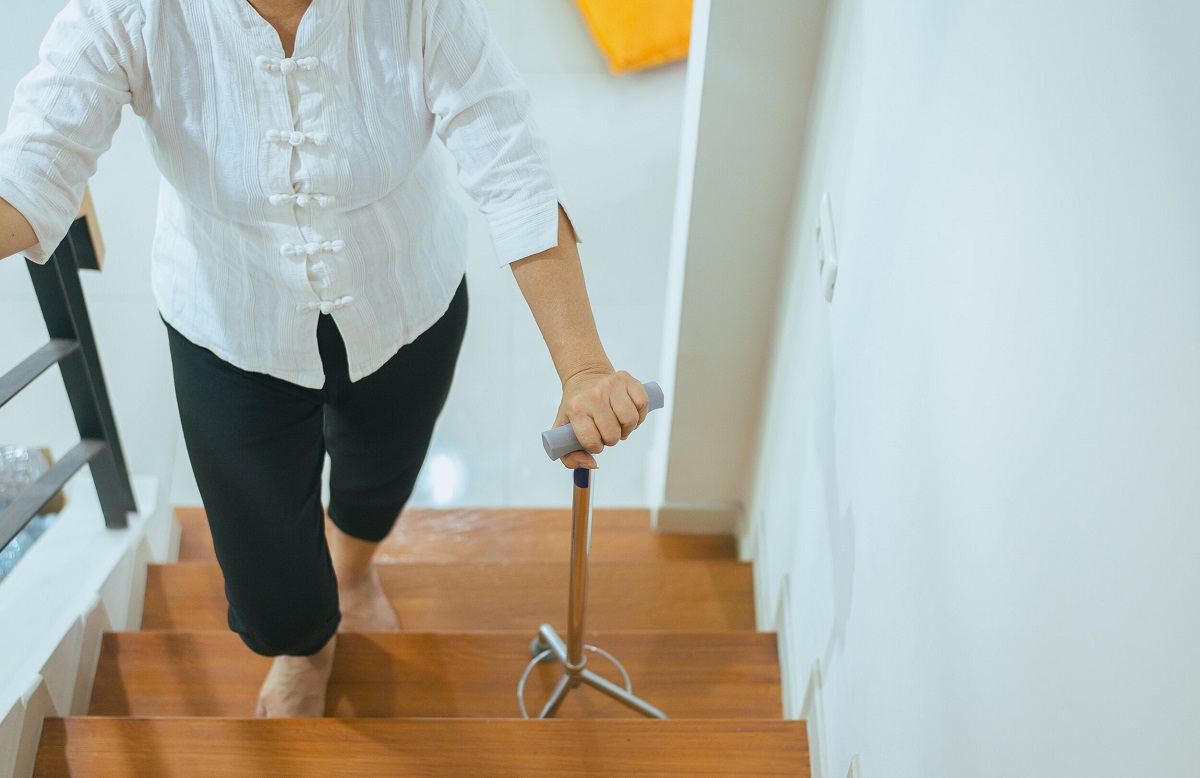

Articles
How To Go Up Stairs With A Walker
Modified: December 7, 2023
Learn how to safely navigate stairs with a walker in this informative and practical article. Expert tips and techniques for a smooth transition!
(Many of the links in this article redirect to a specific reviewed product. Your purchase of these products through affiliate links helps to generate commission for Storables.com, at no extra cost. Learn more)
Introduction
Using a walker can greatly assist individuals with mobility issues in their daily lives. It provides much-needed support and stability, allowing people to move around more independently. However, navigating stairs with a walker can pose a challenge and be potentially dangerous if not done correctly.
In this article, we will guide you through the process of going up and down the stairs with a walker. We will provide helpful tips and techniques to ensure your safety and ease of movement. Whether you are recovering from an injury, dealing with a chronic condition, or assisting a loved one, mastering the art of stair negotiation with a walker is essential.
Before we dive into the specifics of using a walker on stairs, it’s crucial to choose the right walker for your needs.
Key Takeaways:
- Safely navigating stairs with a walker requires choosing the right equipment, prioritizing safety measures, and approaching stairs with caution. With practice and patience, you can confidently master stair negotiation with your walker.
- Prioritize safety by choosing the right walker, following essential safety measures, and approaching stairs with caution. With practice and patience, you can confidently navigate stairs with your walker, ensuring safety and ease of movement.
Read more: How To Go Up Stairs With Crutches
Choosing the Right Walker
When it comes to choosing a walker, there are several factors to consider to ensure it is a suitable fit for your needs.
1. Height and Weight: Select a walker that is the appropriate height for you. The handles should align comfortably with your wrists when your arms are relaxed at your sides. Additionally, check the weight capacity of the walker to ensure it can support your body weight.
2. Type of Walker: There are different types of walkers available, including standard walkers, rolling walkers with four wheels, and knee walkers. Consider your stability, mobility, and personal preferences when deciding which type of walker is best for you.
3. Stability Features: Look for a walker that offers stability features such as adjustable leg extensions, anti-slip rubber tips, and a sturdy frame. These features will provide added support and prevent accidents while navigating stairs.
4. Portability: If you frequently travel or need to transport your walker, consider a lightweight and collapsible model that can be easily folded and stored in a car or closet.
5. Consult a Professional: It’s always a good idea to consult with a healthcare professional or physical therapist for recommendations on the right type of walker for your specific needs. They can provide guidance based on your individual circumstances and help you make an informed decision.
By selecting the right walker, you will ensure that it provides the necessary stability and support when navigating stairs.
Ensuring Safety
When using a walker on stairs, safety should be your top priority. Follow these essential safety measures to minimize the risk of accidents:
1. Clear the Area: Before attempting to use your walker on stairs, make sure the stairway is clear of any obstacles, loose rugs, or clutter. This will prevent tripping hazards and provide a clear path for you to navigate.
2. Wear Proper Footwear: Choose solid, non-slip footwear that provides good traction. This will help you maintain stability and reduce the risk of slipping or sliding while using the walker on stairs.
3. Secure the Wheels: If you’re using a rolling walker, ensure that the wheels are locked in place before starting to climb or descend the stairs. This will prevent the walker from rolling or moving unexpectedly.
4. Use Handrails: Whenever possible, use handrails to provide additional support and balance. Gripping the handrail with one hand while holding onto the walker with the other can significantly enhance stability and minimize the risk of falls.
5. Take It Slow: When using a walker on stairs, practice patience and take your time. Always maintain a steady pace, focusing on each step and ensuring your walker is firmly grounded before proceeding to the next stair.
6. Ask for Assistance: If you feel unsure or uncomfortable navigating stairs with your walker, don’t hesitate to ask for assistance. Having a trusted caregiver, family member, or friend nearby can offer added support and peace of mind.
Remember, safety is paramount when using a walker on stairs. By following these guidelines, you can minimize the risk of accidents and confidently navigate staircases with your walker.
Approaching the Stairs
Before you begin the process of going up or down the stairs with your walker, it’s important to approach the stairs safely. Follow these steps to ensure a smooth transition:
1. Position Yourself: Stand facing the stairs with your walker in front of you. Make sure your walker is parallel to the stairs, and you have a clear view of the steps.
2. Assess the Stairs: Take a moment to assess the height, width, and condition of the stairs. This will help you determine the best approach and ensure you are prepared for any potential challenges.
3. Determine your Strong Side: Determine which side you feel more comfortable using as your “strong side” for stair negotiation. If you have a weaker leg or need additional support, placing your stronger leg on the step first can provide better balance and stability.
4. Face the Stairs: Position yourself close to the first step, facing the direction you intend to go. Ensure that your feet are securely on the ground and your walker is in the correct position.
5. Maintain Proper Posture: Stand tall with your body centered between the handles of the walker. Keep your head up and your gaze forward, focusing on the steps ahead.
By approaching the stairs with caution and proper positioning, you will set yourself up for a safe and successful ascent or descent with your walker.
When using a walker to go up stairs, always lead with your stronger leg and hold onto the railing for support. Take one step at a time and make sure the walker is securely positioned before moving up.
Going Up the Stairs
Navigating stairs with a walker requires careful coordination and balance. Follow these steps to safely ascend the stairs:
1. Secure Your Grip: Ensure that you have a firm and secure grip on the walker’s handles. Keep your weight evenly distributed on both legs.
2. Step Up: Lift your stronger leg and place it on the first step, using your leg muscles rather than relying solely on the walker for support. Ensure that the entire foot is securely on the step before proceeding.
3. Move the Walker: With your foot on the step, carefully lift the walker and place it on the same step. The walker should be positioned directly in front of you, parallel to the stairs.
4. Repeat: Lift your weaker leg and place it on the same step, ensuring your entire foot is securely positioned. Repeat this process, alternating legs, until you have successfully climbed all the stairs.
5. Take It One Step at a Time: Maintain a slow and steady pace as you ascend the stairs. Take breaks if needed, resting on a landing if available, to prevent fatigue or strain.
6. Use Handrails for Support: If handrails are available, use them to provide additional support. Grip the handrail with one hand while holding onto the walker with the other, maintaining your balance and stability.
Remember to focus your attention on each step and maintain good posture throughout the ascent. Take your time, and do not rush the process. By following these steps, you can safely ascend stairs with your walker.
Read more: How To Teach Dog To Go Up Stairs
Going Down the Stairs
Descending the stairs with a walker requires careful control and balance. Follow these steps to safely navigate your way down:
1. Secure Your Grip: Ensure that you have a firm and secure grip on the walker’s handles. Keep your weight evenly distributed on both legs.
2. Position the Walker: Position the walker in front of you, parallel to the stairs, with the front legs of the walker slightly overhanging the edge of the step.
3. Step Down: Take a step down with your weaker leg, ensuring that your entire foot is securely positioned on the step before proceeding. Use your leg muscles to control your descent, relying on the walker for added support.
4. Move the Walker: Once your foot is securely on the step, carefully move the walker down to the same step, ensuring that it remains parallel to the stairs and does not slip or move unexpectedly.
5. Repeat: Take a step down with your stronger leg, ensuring your entire foot is securely positioned on the step. Alternate legs and continue this process, ensuring that each step is securely taken and that the walker is in the proper position on each step.
6. Utilize Handrails: If handrails are available, use them to provide additional support. Grip the handrail with one hand while holding onto the walker with the other, maintaining balance and stability throughout the descent.
7. Take It Slow: Descend the stairs at a slow and steady pace, taking your time to ensure control and balance. If needed, take breaks on a landing or rest halfway down the stairs to prevent fatigue or strain.
By following these steps and maintaining a cautious and deliberate approach, you can safely navigate stairs with your walker while descending.
Tips for Easy Navigation
Here are some additional tips to help you navigate stairs with your walker more easily:
1. Practice on Level Ground: Before attempting to use your walker on stairs, spend some time practicing on level ground. This will help you familiarize yourself with the mechanics of using the walker and improve your overall stability and confidence.
2. Use a Sturdy Walker: Ensure that your walker is in good condition, with stable and well-maintained wheels, handles, and leg extensions. A sturdy walker will provide the necessary support and stability during stair navigation.
3. Consider Assistive Devices: If you find it challenging to navigate stairs even with a walker, consider using additional assistive devices such as stair lifts, handrails, or grab bars. These can provide extra support and make the stair negotiation process easier and safer.
4. Seek Professional Training: Consider consulting with a physical therapist or occupational therapist who can provide specialized training in using your walker on stairs. They can teach you proper techniques, provide exercise recommendations, and address any specific mobility issues you may have.
5. Take Regular Breaks: If you are feeling fatigued or uncertain during stair navigation, take regular breaks to rest and regain your strength. Listen to your body and don’t push yourself beyond your limits.
6. Stay Focused: Keep your attention focused on the task at hand when using your walker on stairs. Pay attention to your surroundings, take each step deliberately, and avoid distractions that could potentially compromise your safety.
7. Engage Your Core Muscles: Engaging your core muscles can help improve your stability and balance while using a walker on stairs. Focus on maintaining good posture and engaging your abdominal and back muscles throughout the stair navigation process.
Remember, with practice, patience, and adherence to these tips, you can navigate stairs with your walker more easily and confidently.
Conclusion
Navigating stairs with a walker may seem challenging at first, but with the right techniques and precautions, it can be done safely and efficiently. By choosing the appropriate walker for your needs, ensuring safety measures are followed, and approaching stairs with caution, you can confidently ascend and descend without putting yourself at risk.
Remember to take your time, maintain proper posture, and utilize handrails for added support. Practice on level ground before attempting stairs and consider seeking professional guidance or using assistive devices if needed. Taking regular breaks and listening to your body will help prevent fatigue and potential accidents.
Always prioritize your safety and seek assistance if you feel unsure or uncomfortable navigating stairs with your walker. Consulting with a healthcare professional or therapist can provide personalized guidance that aligns with your specific needs and condition.
With practice, patience, and adherence to the tips outlined in this article, you can master the art of going up and down stairs with a walker. Remember, your walker is a valuable tool that can help you regain your independence and maintain an active lifestyle. By following the proper techniques, you can continue to move confidently and safely throughout your surroundings.
Frequently Asked Questions about How To Go Up Stairs With A Walker
Was this page helpful?
At Storables.com, we guarantee accurate and reliable information. Our content, validated by Expert Board Contributors, is crafted following stringent Editorial Policies. We're committed to providing you with well-researched, expert-backed insights for all your informational needs.















0 thoughts on “How To Go Up Stairs With A Walker”